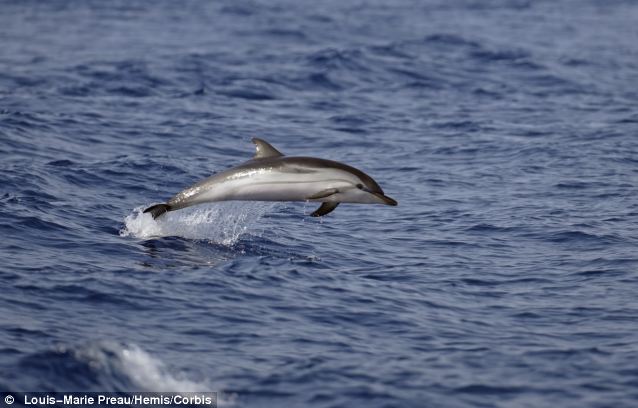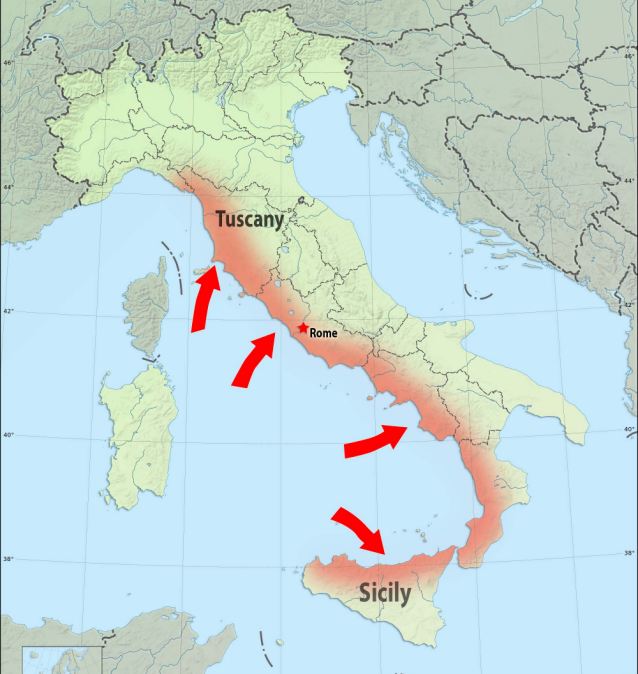Dolphins thought to have died from virus that causes measles in humans
Found on beaches from Tuscany to Sicily since turn of the year
Scientists believe that more than 100 dolphins washed up dead along the Italian coast were struck down by a killer strain of measles.
A total of 101 dolphin carcasses have been counted on the west coast of Italy since the beginning of the year.
All are the same species - striped dolphins which have a distinctive blue and white pattern and grow to about eight feet long. They usually live for 50 or 60 years.

Instead the deaths are being attributed to a possible outbreak of Morbillivirus, the virus that causes measles in humans, which scientists believe created a gateway for other illnesses among the animals.
Thirty-five per cent of the corpses tested positive for dolphin measles, Italy's Ministry for the Environment said.
A statement from the ministry read: 'At the moment the suspected cause of the mass cetacean deaths is measles (morbillivirus delphini) and the bacterium Photobacterium damselae.
'The deaths could be caused by food shortages which weaken the animal making them more easily exposed to diseases and parasites.' A similar epidemic decimated Spanish dolphin populations between 2006 and 2008.

Animals born after a 1990-92 epidemic are devoid of the antibodies needed to defend them against the disease, scientists said.
None of the dead dolphins had food in their stomachs, which suggests that they may have starved to death because the virus left them weakened.
Overfishing which has left the Mediterranean with sparse reserves of dolphin prey could also be a factor, the government agency said.
Striped dolphins feed on small prey including hake, cuttlefish, squid, mackerel and sole, all species subject to intensive fishing.
The species is found in all the world's tropical oceans. They are very sociable, travelling in large pods which can include hundreds of dolphins and are among the most acrobatic breeds. There are thought to be around two million striped dolphins in the world.



Reader Comments
to our Newsletter